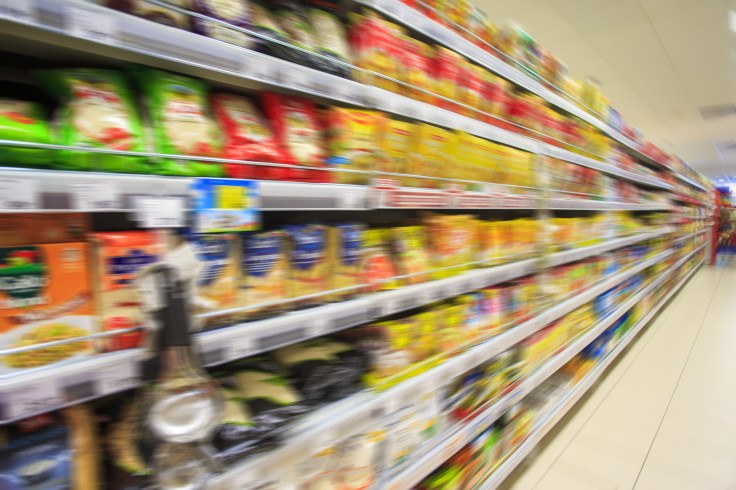Grocery Stores Sell Processed Foods High In Fat, Sugar, And Salt More Than Anything Else

Potato chips, cupcakes, gummy bears, and frozen meals are some of the most popular items purchased in America, according to a revealing new survey. After exploring grocery stores across the country, researchers have discovered more than 60 percent of the calories we eat off the shelves are processed food. The nationwide analysis conducted by the Federation of American Societies for Experimental Biology (FASEB), found the amount of fat, sugar, and salt Americans are eating is way over the recommended limit. The study is the first of its kind to assess different types of processed foods, and the findings will be presented at the American Society for Nutrition (ASN) Annual Meeting during Experimental Biology 2015.
“Many Americans have strongly held opinions and beliefs about processed foods,” the study’s lead author Jennifer M. Poti, a research assistant professor at the University of North Carolina at Chapel Hill, said in a press release. “Some consider processed foods to be tasty, convenient, and affordable choices, while others contend that the combination of sugar, fat, salt, and flavoring in these foods promotes overeating and contributes to obesity. But until now, we didn’t really have the evidence needed to settle this debate: No prior studies have examined whether highly processed foods collectively have a worse nutritional profile than minimally processed foods, using nutrition information and ingredient lists specific for barcoded food and beverage products.”
Researchers, funded by the National Institutes of Health, surveyed 157,142 American households to follow their purchasing patterns in grocery stores from 2000 to 2012. Each household recorded their food and beverage purchases for an average of four years with a UPC barcode scanner. The researchers categorized the 1.2 million food items recorded by the households and ranked the degree of the foods’ processing, ingredients, and the level of ready-to-eat convenience. It turns out, 61 to 62.5 percent of the food purchases made were highly processed foods full of fat, salt, and sugar.
More than 80 percent of calories consumed from grocery stores in 2012 were from ready-to-eat or ready-to-heat food items. It’s important to note, however, researchers couldn’t include foods without barcodes, which means some healthy produce items may have gone unrecorded.
"Overall, we found that not only are highly processed foods a dominant, stable part of U.S. purchasing patterns, but also that the highly processed foods that households are purchasing are higher in fat, sugar, and salt, on average, compared to the less-processed foods that they buy," Poti said. "The unshifting dominance of ultra-processed and ready-to-eat foods as major calorie contributors to U.S. diet and their poor nutrient profile support the need to incentivize food manufacturers to improve the nutritional quality of their products."
The research team will continue to track purchases’ nutritional quality and see how our food choices evolve over time. Currently, more than one-third of the country is obese, which increases rates of heart disease, stroke, type 2 diabetes, and certain types of cancer, according to the Centers for Disease Control and Prevention. Grocery stores, convenience stores, and even fast food restaurants, sell their unhealthy food at lower prices, which increases the obesity rates gap between low- and high-income consumers, according to a recent urban study conducted at New York University. Future studies will be designed to examine the link between processed food consumption and America’s obesity epidemic.
"It is important that when we discuss processed foods, we acknowledge that many processed foods, such as canned vegetables or whole grain breakfast cereals, are important contributors to nutrition and food security," Poti said. "However, it is the highly processed foods — those with an extensive degree of processing — that might potentially be related to obesity."
Source: Poti JM. American Society for Nutrition (ASN) Annual Meeting during Experimental Biology 2015. 2015.



























